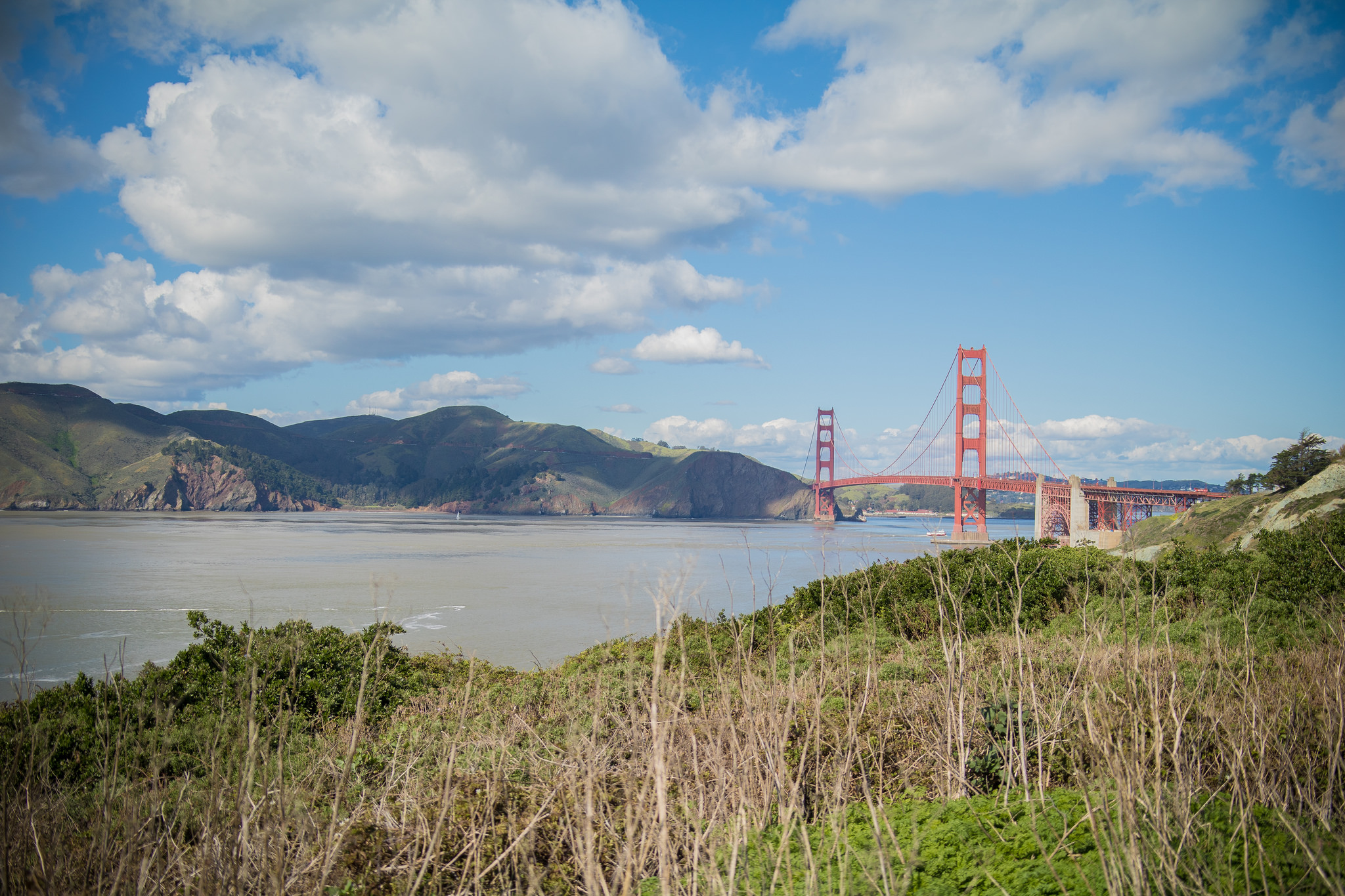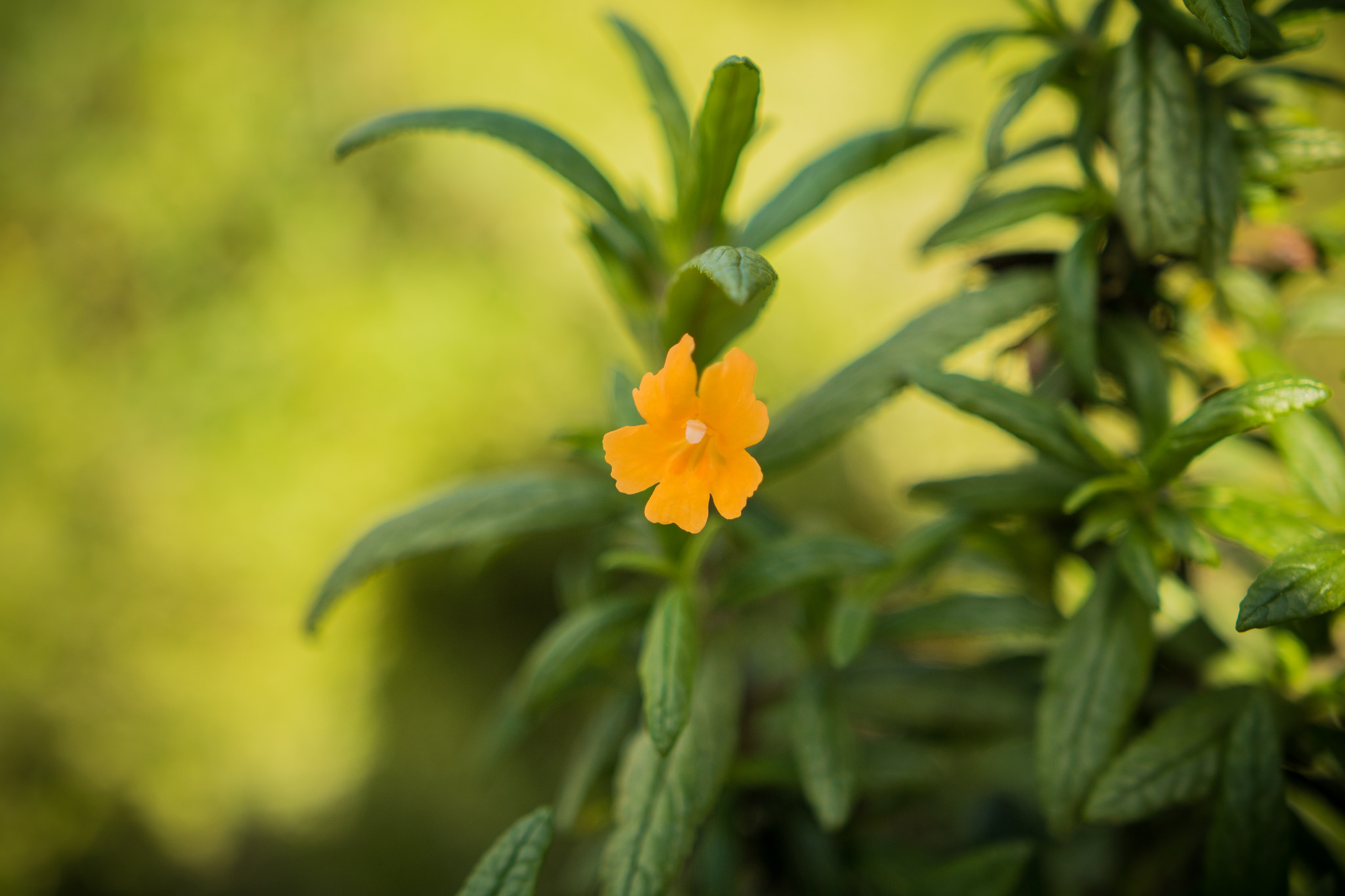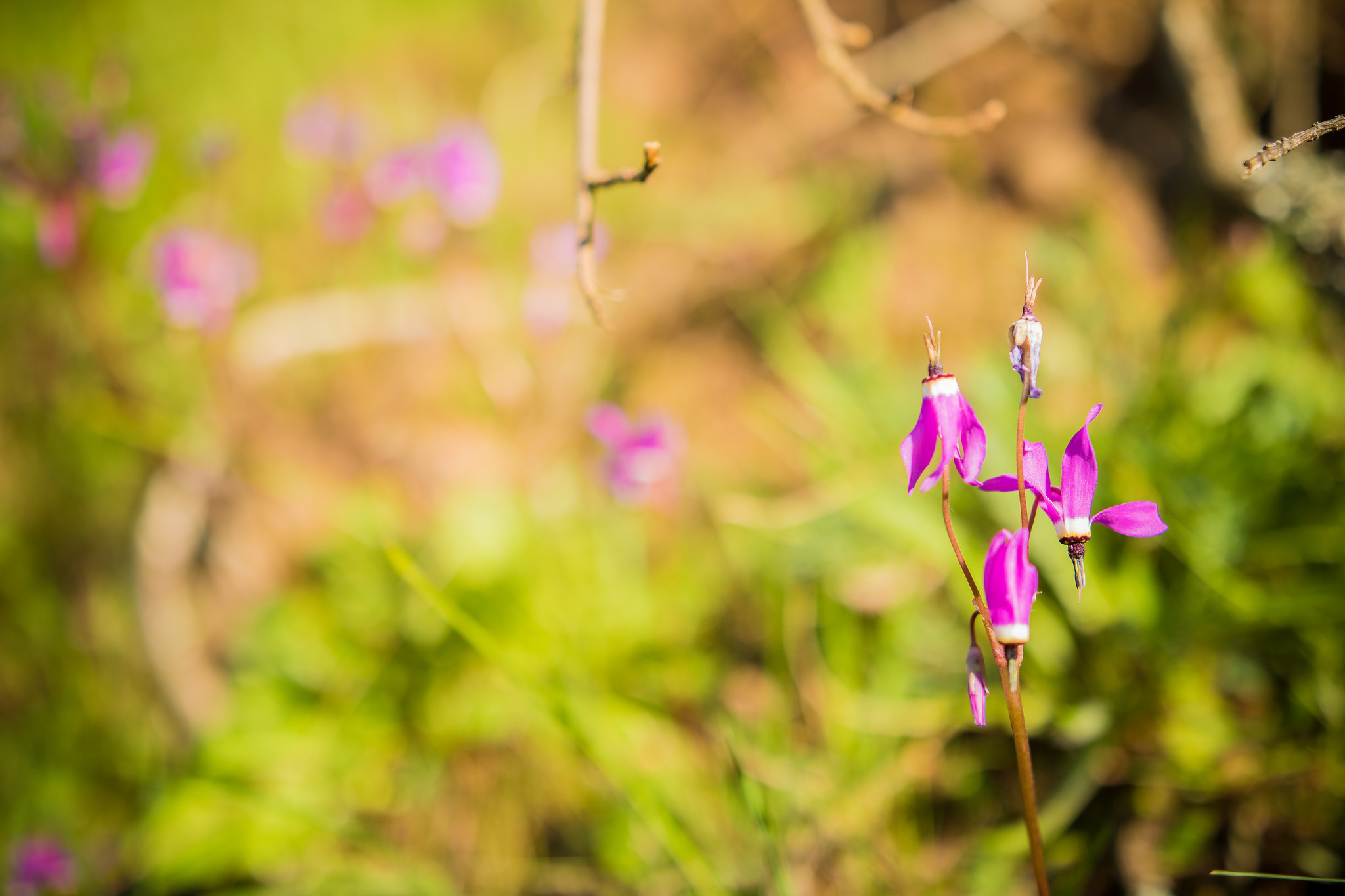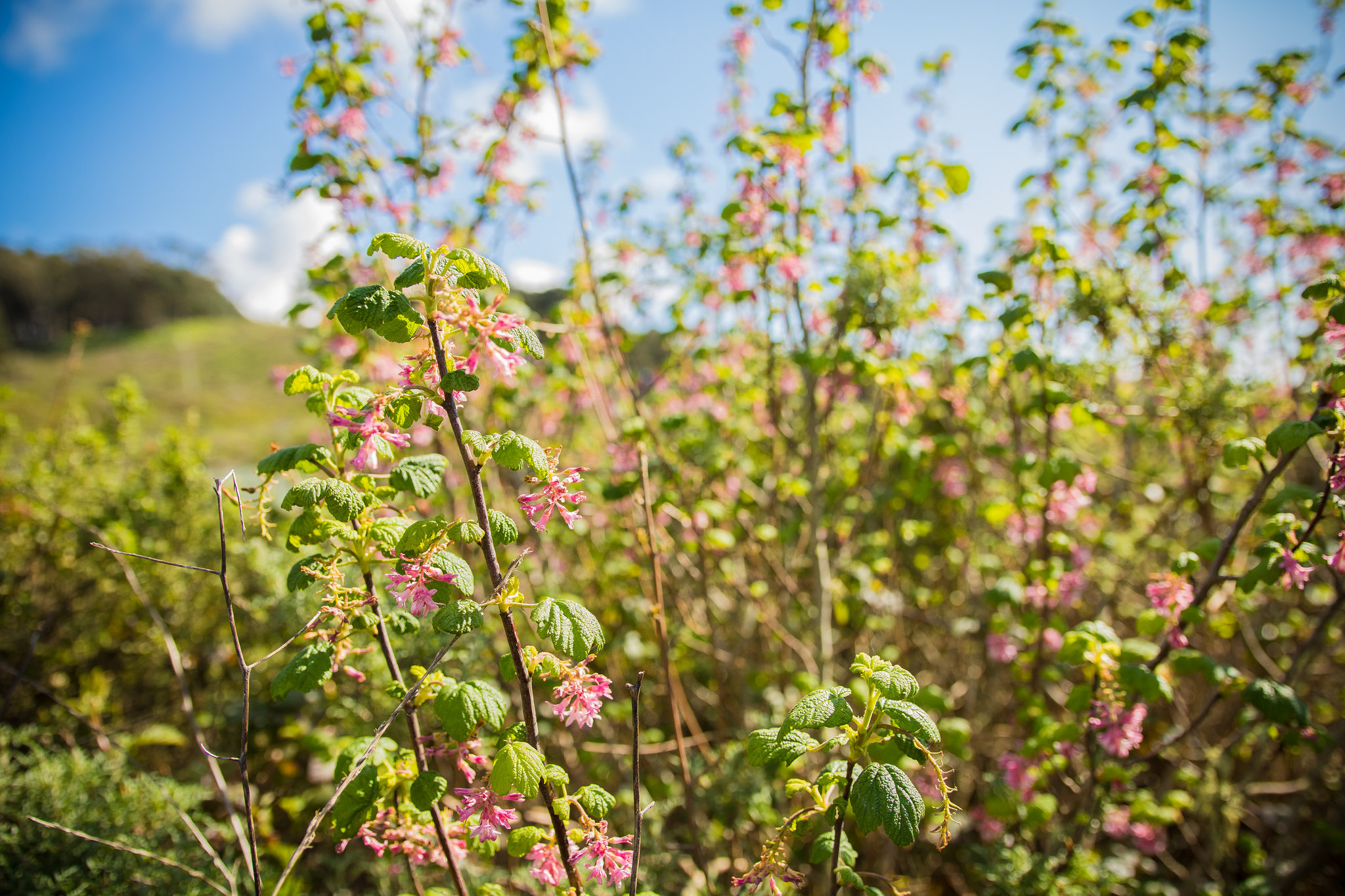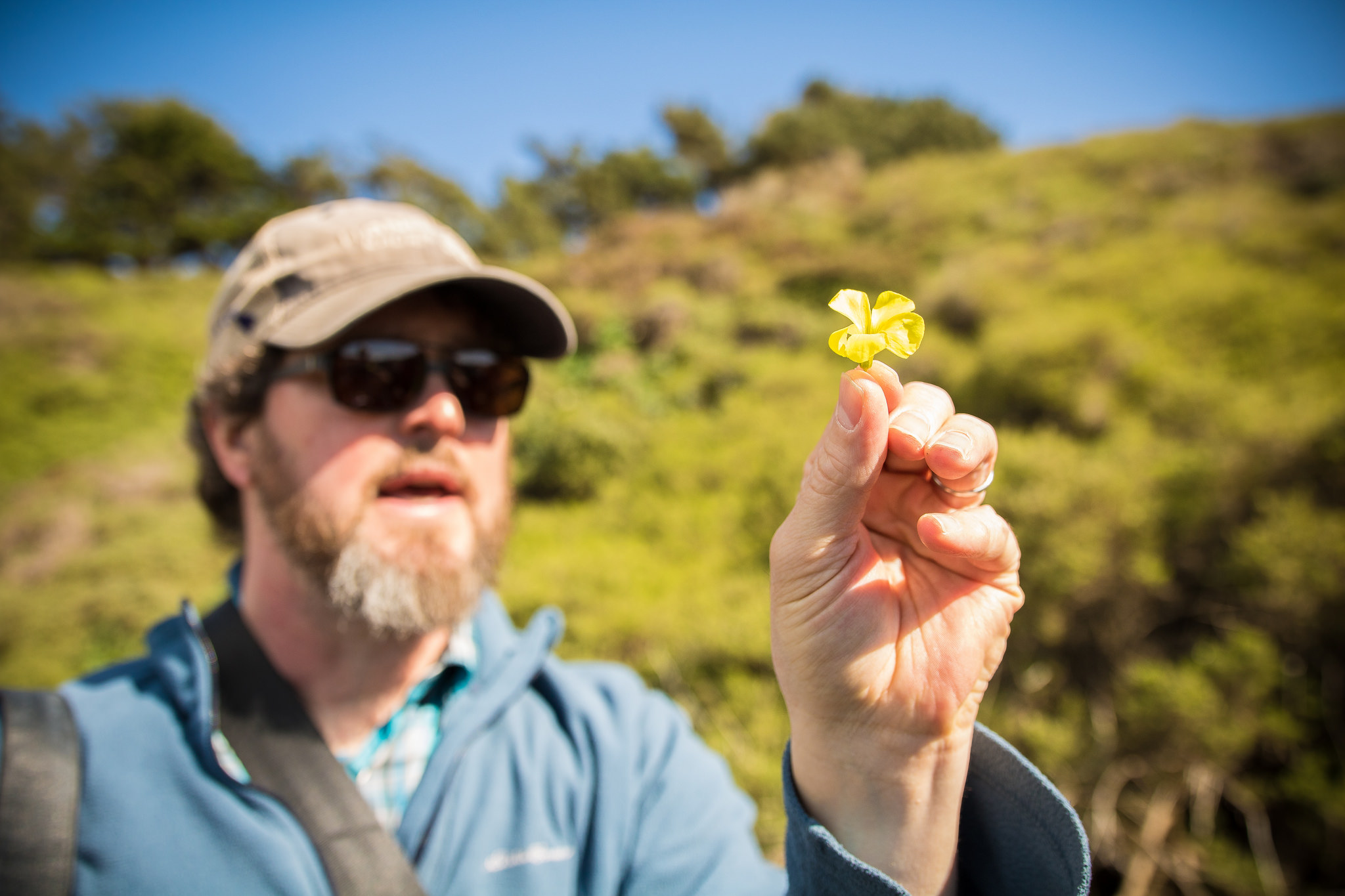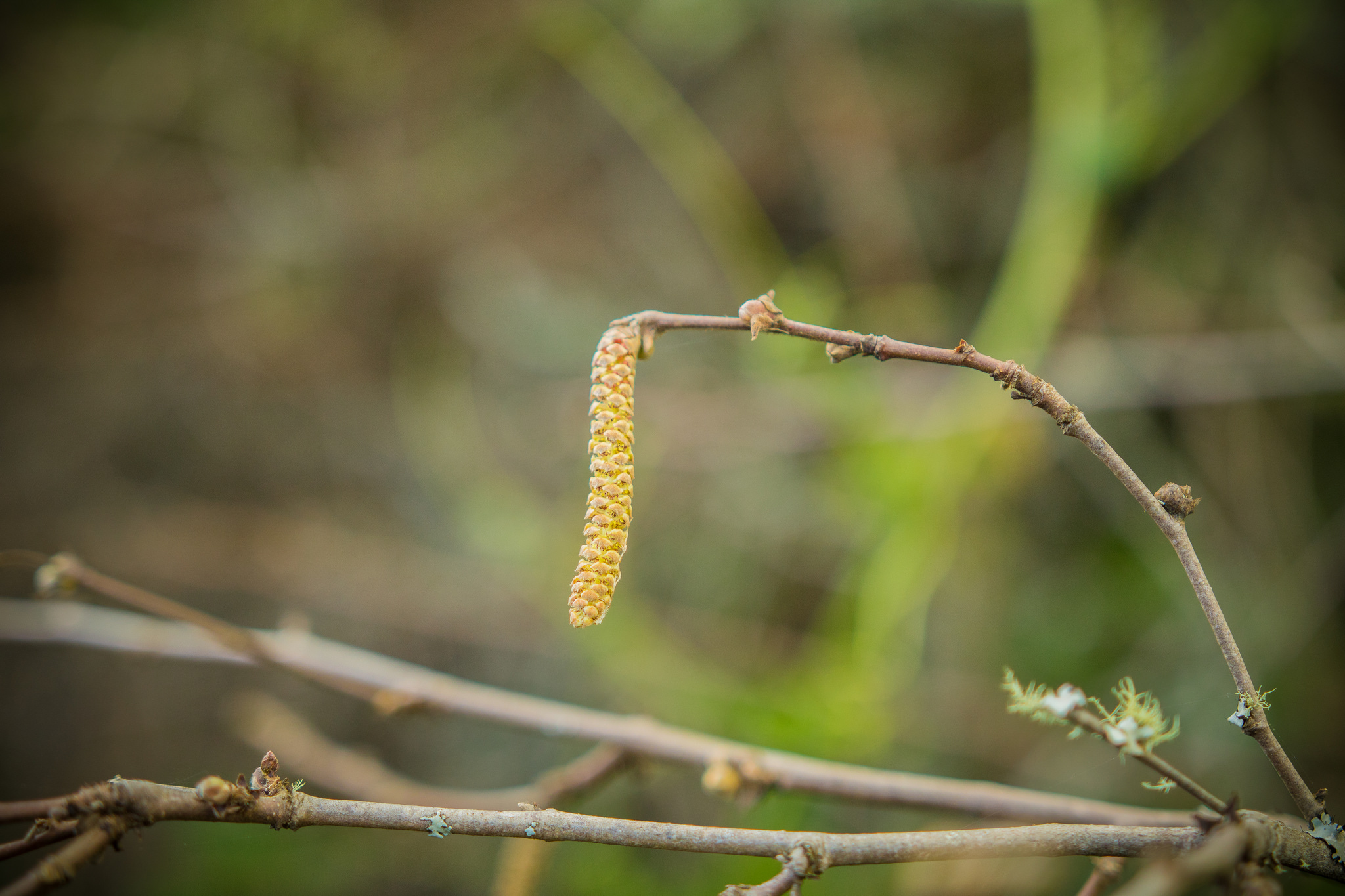Date: 2/23/2017
Location (2): Presidio Coastal Trail (37.799144, -122.480886) – Elevation: ~150 ft;
Marin Headlands (37.834775, -122.499125) – Elevation: ~660 ft
Site Description(s):
The Presidio Coastal Trail resides West to the Presidio along the coast, and South to the Golden Gate Bridge. Traversing this path is done on a rock path, and provides a fantastic view of the coastline along with the Golden Gate Bridge and the distant Marin Headlands. As mentioned by Dr. Paul, most of the plant species found in this site are fairly small and close to the ground – as this site is constantly beset by harsh and cold coastal winds, it makes sense for the plants to be small in stature in order to conserve water. This site also acts as a official conservation site for many species of Californian plants.
The second site we visited consisted of a trail behind Hawk Hill, which is nestled within the Marin Headlands. As per norm, after parking our car, the site was traversed via a dirt path. Our path of interest “hugged” the hillside, which was able to block most of the vicious coastal winds until we descended deeper into the headlands during the second half of our hike. Many of the plant species we found here are endemic to our Central Western region of California.
Species Description:
1) Mimulus auratiacus (Family: Phrymaceae), a native to California and also known by its common name the “Sticky Monkey Flower”, is a perennial orange flower that boasts a height of about 3-4 feet, and was one of the first flower species we stumbled upon along the Presidio Coastal Trail. The flower itself is bilaterally-symmetrical with a “funnel-form” flower shape. Other things of note are that the flower feels “rubbery”, and that in this photo, the fact the white component is sticking out indicates that it is ready to be pollinated (most likely by a hummingbird or bee).
2) Primula Herndersonii (Family: Primulaceae), a native to California, known by its common name the “Mosquito Bill” and its EVEN MORE common name “Henderson’s Shooting Star” was one of the last flower species we encountered during our excursion within the Marin Headlands. We found it around the edge of a trail – which probably fits its profile best with it allowing to obtain sunlight without competing with other “big-name” species. Its most important characteristic of distinction of this flower is that its petals are “reflexed”, or bent back. As seen in the photo below, the petals are opposite to the usual configuration (with flower petals typically pointed upward), which exposes the anthers and stigma.
3) *cue dramatic music* …Finally, to what we’ve all been waiting for. I want to give a big shoutout to a plant within the genus which I am acting as genus-ambassador, since this my first time encountering it within the field. Say hello to Ribes sanguineum (Family: Grossulariaceae), also known by its common-name the “Flowering Currant”. As you can see, this flower is anything but “gross” – perhaps it should have been placed in a Family called “Good-lookingriaceae”. Really bad jokes aside, the Flowering Currant has long and showy pink flower clusters. The flowers themselves are in funnel form, and are pendant (hanging downward). It was exciting first encounter with a member of the genus I’m representing – can’t wait till I run into more RIBS!
Narrative: We started off the day with some fantastic sunny weather, with no possibility of rain-fall in sight. After leaving from campus at around 1 PM and managing to secure parking at our first site of interest (Presidio Coastal Trail), we left the cars and immediatedly ran into some plant species of interest not far from the parking site. In fact, it seemed that we couldn’t walk for another 10 seconds without running into another important plant species of interest that Dr. Paul wanted to point out! This set the theme throughout the day: that we were going to be going to be introduced to ALOT of plant species. It was fairly hard to keep up since I especially want to record all the details while trying to take as many photos as possible of the flowers and the group. After we arrived at the end of the trail and took enjoyed the majestic view of the Bay along the Golden Gate Bridge from atop of a bunker, we headed back to the cars so we could begin the second part of our excursion!
The second part of our excursion took us across the Golden Gate Bridge, where we promptly drove up into the hills. It’s always a different experience for me whenever I drive up these hill, since I’ve must have biked up the slopes hundreds of times as a cyclist. At any rate, we parked our cars at the roundabout and promptly headed down into the headlands via a dirt part. Although it was still sunny from that point on with wonderful weather, we were constantly within the shade as the trail we were on along the hillside was sheltered from the sun. That didn’t bode too well with many members of the group, as the cold winds combined with the lack of sunlight led to quite the “chilling” experience for many folks. Once we finished examining many more plant species of interest (some which we had run into already, such as the Madrone, pictured below), we headed back upward to the cars. Dr. Paul treated the group to a drive all the way up to Hawk Hill, where we treated to a view of the entirety of San Francisco and the Bay – a view that never gets old for me whenever I see it. We finally headed back to school, where we arrived a little before 5 PM – just on time!

A photo of the entire group just passing by a Madrone (a species we’re quite familar with) within the Marin Headlands trail!
And more Photos!!!

A leaf belonging to Frangula californica (Family: Rhamnaceae), also known as the California Coffeeberry. When held up to the sun, the reticulate venation of the leaf along with its tiny dentations along its edges is extremely prominent.
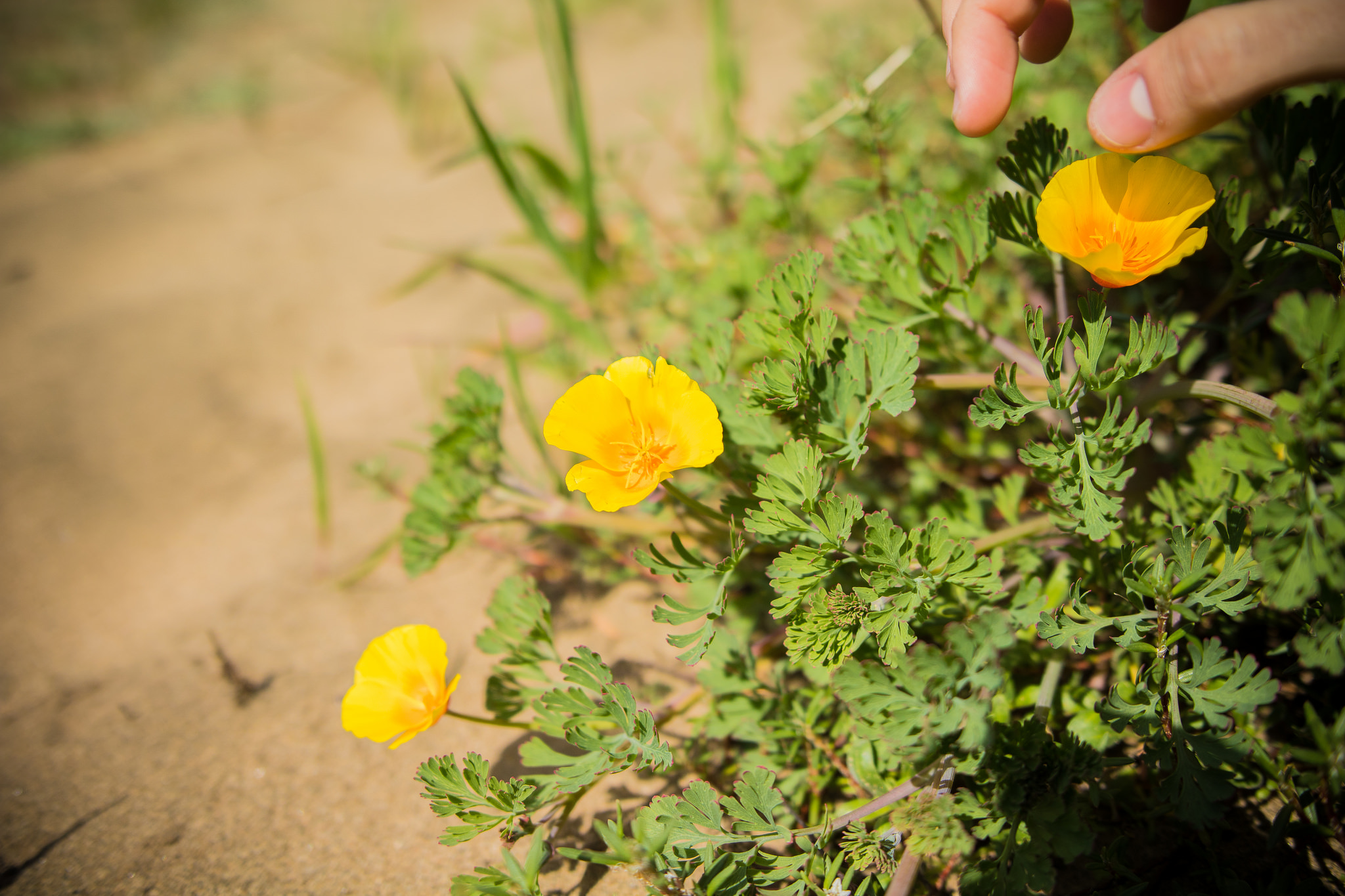
Eschscholzia californica (Family: Papaveraceae), also known as the California Poppy. This is a plant species of notable interest to Patrick, as he’s set to conduct a research project on it!

A photo of a photo (INCEPTION?!) of Polygonum paronychia (Family: Polygonaceae), also known as the Dune Knotweed.
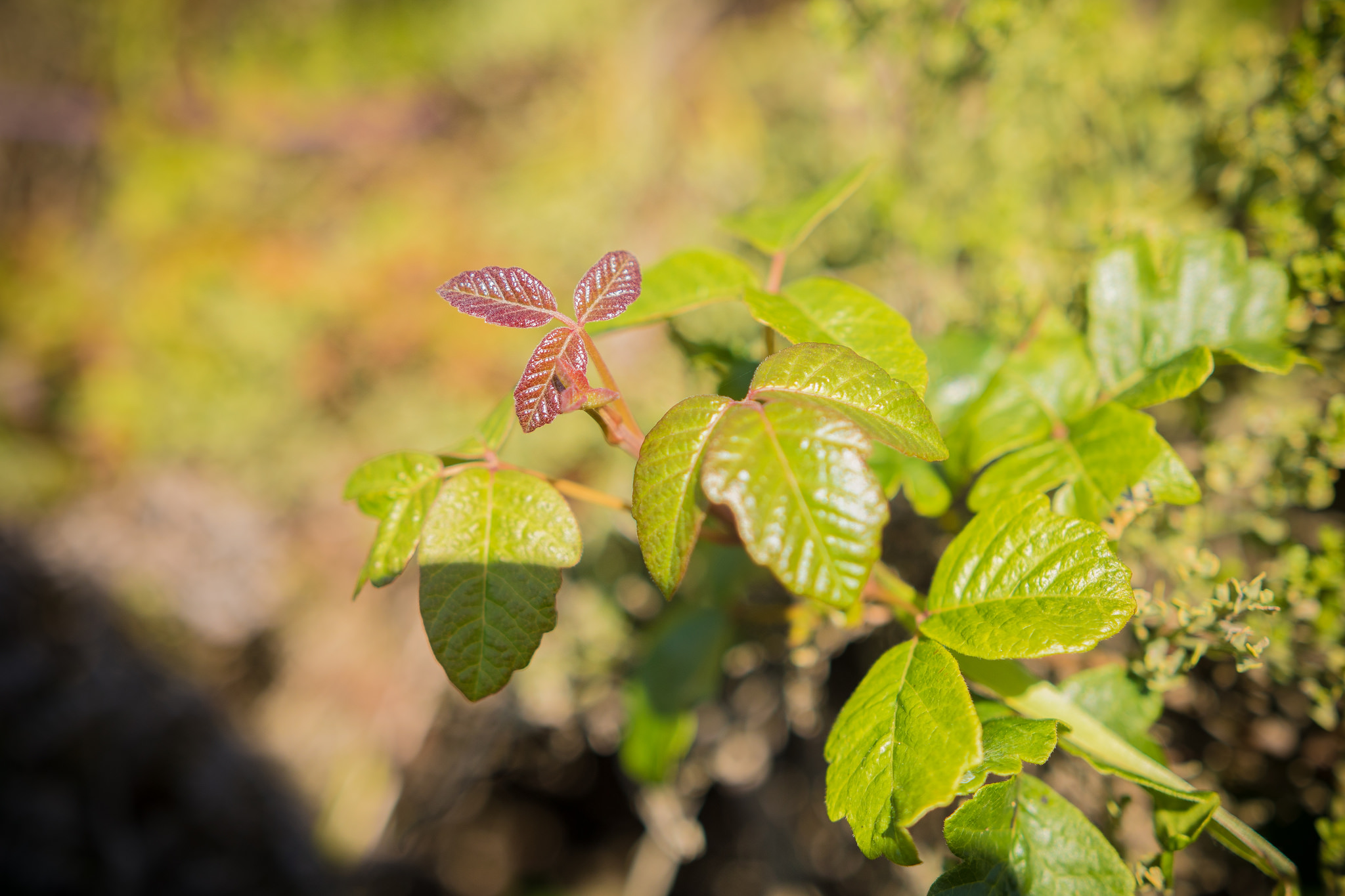
A plant species feared by all – our good friend Toxicodendron diversilobum (Family: Anacardiacae) – A.K.A, Poison Ivy!
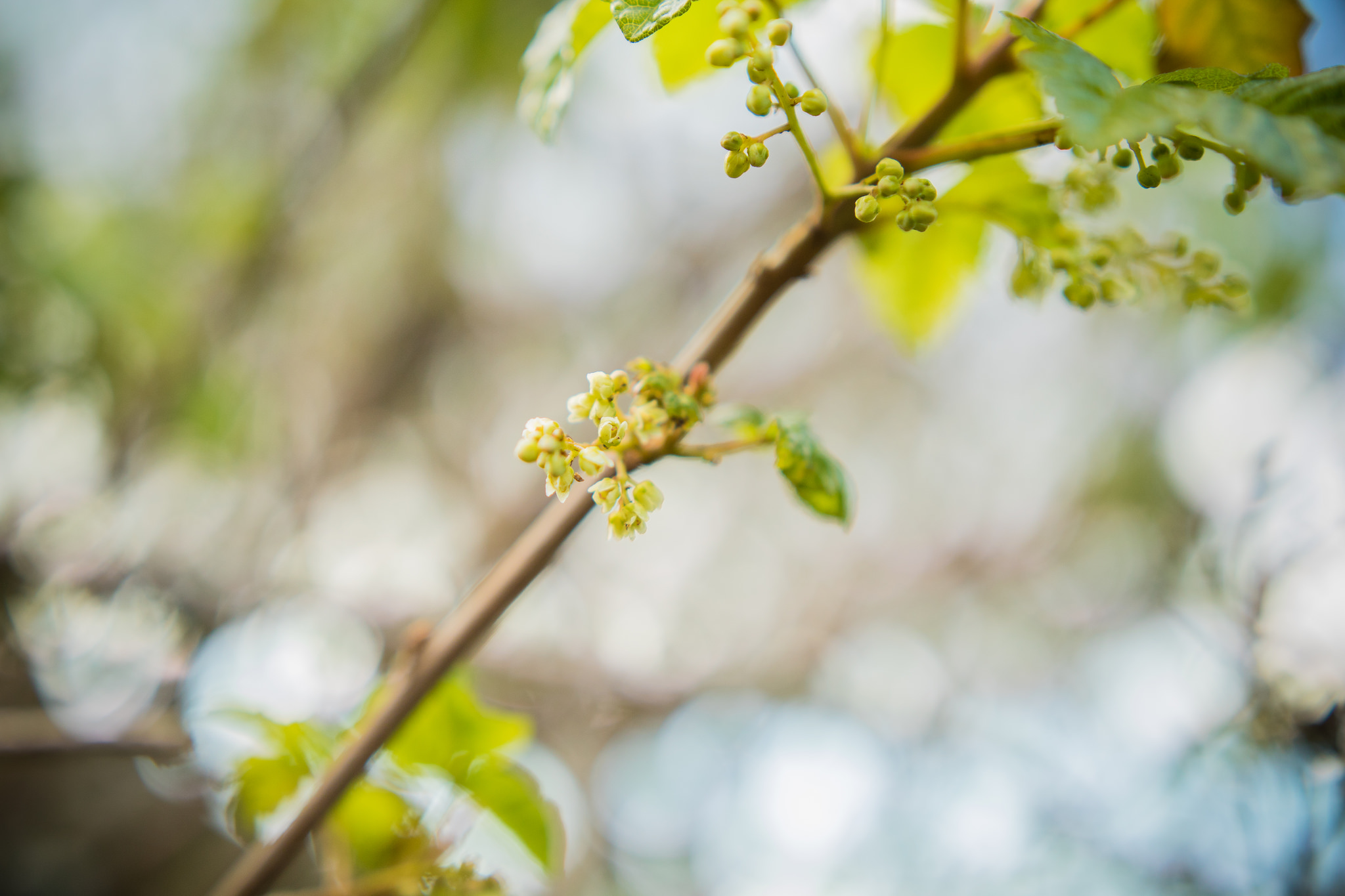
Now here’s something you don’t see too often when you’re focused on its menacing leaves…the flowers of Poison Ivy!

This cluster is known as a “gall”, which provide shelter to insects. Dr. Paul told us that insects can trick the plants to build these homes for it by releasing certain chemicals. Super cool!

